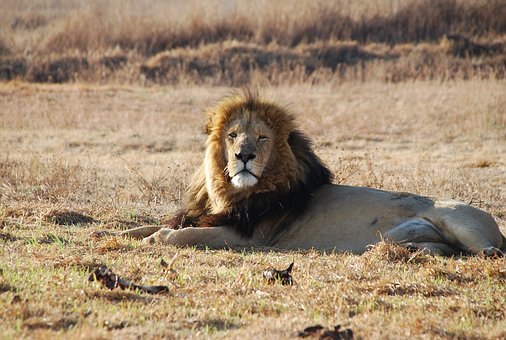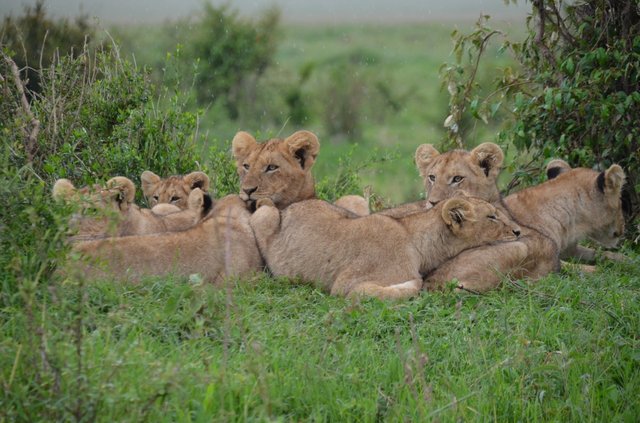THE AMAZING WORLD OF ANIMALS: LION Part 1 – Let’s meet the 'King Of The Jungle'!!!

This majestic beast is probably the most readily recognized of the big cats family. This means that both males and females are able to roar. The lion is also one of the most widely recognized animal symbols in human culture. It has been extensively depicted in sculptures and paintings over human history. This can be attributed to the fact that the Lion is one of the largest, strongest and powerful felines in the world second only in size to the Siberian Tiger. They are some of the most formidable animals on the planet. The lion's fearsome appearance immediately strikes terror in the mind. They are the largest and most fearful cats in Africa.
Unlike other big cats, lions have a very sociable lifestyle and live in family groups called prides. A pride is normally made up of a collection of females, usually a mother and daughters or sisters, their cubs of varying ages and one or two adult males. Female cubs typically stay with the group as they age. Young males eventually leave and establish their own prides by taking over a group headed by another male. A pride could be as small as three or four lions or could have as many as 30 or more lions. Such large prides are called 'super prides'. With rapidly dwindling populations, lions are now mainly found in Angola, Botswana, Mozambique, Tanzania, the Central African Republic, South Sudan and other parts of sub-Saharan Africa. From a population of more than 200,000 a century ago the lion population has dropped to a mere 20,000 today. This sad situation is principally due to increased poaching, habitat loss, and disease. These magnificent predators are becoming more and more vulnerable in their decreasing natural environment.

Appearance
Lions have a short coat of tawny or golden fur with a long tail that has a tuft of longer fur at the end. The color of the adult lion’s mane ranges from blonde, to red, brown and black and covers their head, neck and chest. Not all male lions have manes. According to National Geographic some have been known to be maneless. These shaggy manes which also vary in length are believed to be linked with testosterone levels of the male. Lions have a significant roar which can be heard five miles away and which can almost be as loud as thunder! Lions use roaring to claim their territory and communicate their presence to other lions who may want to intrude into their territories. They also use urine to scent mark their territories which could be as large as 100 square miles of scrubs, grasslands and open woodlands.
A lion can be as long as 1.4m - 2.5m (4.7ft - 8.2ft) from head to tail and weigh between 120kg - 249kg (264lbs - 550lbs). At top speed a lion can put in 56kph (35mph) but cannot sustain that speed for long because of their bulk.
Conclusion
I hope you liked this brief introduction to the world of one of the most formidable animals on the planet. In my next post titled ‘Savage Hunter’, I will be exposing you to the lion's diet and prey. In the meantime a few Lion Facts for you in this YouTube video
Content Sources:
Live Science
A - Z Animals
National Geographic